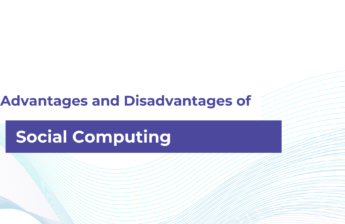The use of social software application has increased in our lives. We can see different advancement happening in this arena. People are using these social softwares to collaborate, communicate, build networks, relationships, and many more. Are you curious about social software? Let us discuss the definition of social software and its types.
Contents
What is Social Software?
Social software, also known as social platforms, encompasses web-based interaction and interactive tools. Tools for communication handle audio, written and video exchanges while interactive tools facilitate communication and discussions among users. Social software allows collaboration and self-expression, community building and sharing of opinions, typically with a self-regulating or centralized method. Internet 2.0 applications have improved collaboration and community building online. The software allows for the aggregate of user activity, which allows for people to learn from crowds and individuals alike. Interactions may be one-to-one, one-to many, or many-to a lot.
Read more about what is social computing.
Types of Social Software:
Instant Messaging:
The instant messaging (IM) lets you communicate in real time via a network with a degree of private. Users can add friends to their contacts list via email and messenger ID. If a person can be online at the time, they are able to chat in the chat window.
Text Chat:
Text chat technology like Internet Relay Chat (IRC) permit users to join chat rooms and chat with numerous people in public. Chatters can join chat rooms already in existence or create new chat rooms. Chat messages can be written and viewed by all members of the room, making it easier for conversations in groups.
Collaborative Software:
Software for collaboration, also referred to as groupware, just like Moodle and SharePoint allows users to collaborate on data (files photographs, text, and other information) to collaborate on projects. It allows collaboration and interaction among groups.
Internet Forums:
Internet forums are websites that allow users to post topics for discussion. Others can post their comments in a linear way. Forums can be either public or private, categorized according to categories, and could include features such as images and the ability to quote.
Wikis:
Wikis enable collaborative web content creation. Users, irrespective of technical abilities, are able to create and edit pages of content. It’s a community that is democratic, where everyone can make contributions to improving the wiki.
Blogs:
Blogs are blogs that allow people post messages on a regular basis that allow others to comment. The subjects can vary greatly from personal issues to political views and specific preferences.
Collaborative Real-Time Editors:
Collaborative real-time editing lets simultaneous editing of media or text files for different users across the internet. It’s utilized in cloud-based film editing as well as cloud-based office software.
Prediction Markets:
The prediction markets allow users to make predictions and bet on the future of events, which encourages an official type of social interaction.
Social Network Services:
Social network services connect people online in connection with common interests, hobbies, or even causes. They are able to support sports enthusiasts or business networking as well as social events that meet up.

Social Network Search Engines:
Social networks are search engines that organize results from search by using social networks, whether explicitly (defined relations) and implicit (shared opinions). They aid in filtering information by trust or shared interests.
Deliberative Social Networks:
Deliberative social networks allow for discussions and debates to aid in making decisions, linking individuals to their respective governments.
Commercial Social Networks:
Commercial social networks facilitate branding and business transactions that allow customers to be engaged and product enhancement.
Social Guides:
Social guides suggest real-world locations like cafes as well as restaurants and WiFi hotspots, usually built on the content of users.
Social Bookmarking:
Social bookmarking lets users share their preferred websites, which could lead to friendships with others who have the same passions. It also assists in search engine optimization and social media.
Social Viewing:
Social viewing enables multiple users to watch online videos together in synchronized viewing experiences.
Social Cataloging:
Social cataloging is a technique used by academics to publish references to different sources, which allows for sharing resources and bringing together people who share similar interests.
Social Libraries:
Social library apps help users manage and share their libraries providing recommendations based upon the user’s ratings, and allow for the borrowing of items between friends.
Social Online Storage:
Social online storage apps allow collaboration on the creation and sharing of files and combining file distribution to the public and direct sharing between friends.
Social Network Analysis:
Tools for analyzing social networks analyze the connections between data within social networks to find groups with trends and influencers. These tools can be used by professionals and consumers.
Virtual Worlds:
Virtual worlds offer environments where people can meet and interact using avatars. Communication is often through chat or voice chat.
Massively Multiplayer Online Games:
Online games that are multiplayer (MMOGs) blend elements of role-playing with online contests and point systems. They make virtual worlds, with players and winners.
Non-Game Worlds:
Some virtual worlds are less game-like and more akin to social networking platforms, offering 3D simulation features.
Economies in Virtual Worlds:
Virtual worlds can have their own economies, where real-world services are provided in exchange for in-game currency. This economic aspect has led to the need for monitoring and regulation.
Advantages of Social Software:
Global Connectivity: Social software offers the opportunity to connect with people worldwide, fostering global connections and interactions.
Business Exposure: Social software provides a platform for businesses to gain brand exposure and connect with a broader audience.
Entertainment: Engaging with social networks can be a source of entertainment and fun, making it an enjoyable experience for users.
Academic Support: Social software tools can aid students in improving their academic performance, offering resources for research and learning.
Elderly Engagement: Social media platforms can help the elderly feel more connected to society, reducing feelings of isolation.
Real-Time Information: Social software platforms deliver real-time updates and information, making it an efficient source for staying informed.
Disadvantages of Social Software:
Information Overload: The use of social software exposes individuals to a vast amount of information, potentially overwhelming users.
Privacy Concerns: Social software raises significant privacy issues, as personal information can be at risk of exposure.
Cyberbullying and Peer Pressure: Social software can be a breeding ground for cyberbullying and peer pressure, creating harmful online environments.
Distraction: Overuse of social software can lead to severe distractions for some individuals, affecting productivity and focus.
Sedentary Lifestyle: Excessive reliance on social software can contribute to an inactive or sedentary lifestyle, impacting physical health.
Dissemination of False Information: Social software platforms can rapidly spread false or unreliable information, leading to misinformation and confusion.






